ВУЗ: Казахская Национальная Академия Искусств им. Т. Жургенова
Категория: Книга
Дисциплина: Не указана
Добавлен: 03.02.2019
Просмотров: 17272
Скачиваний: 51
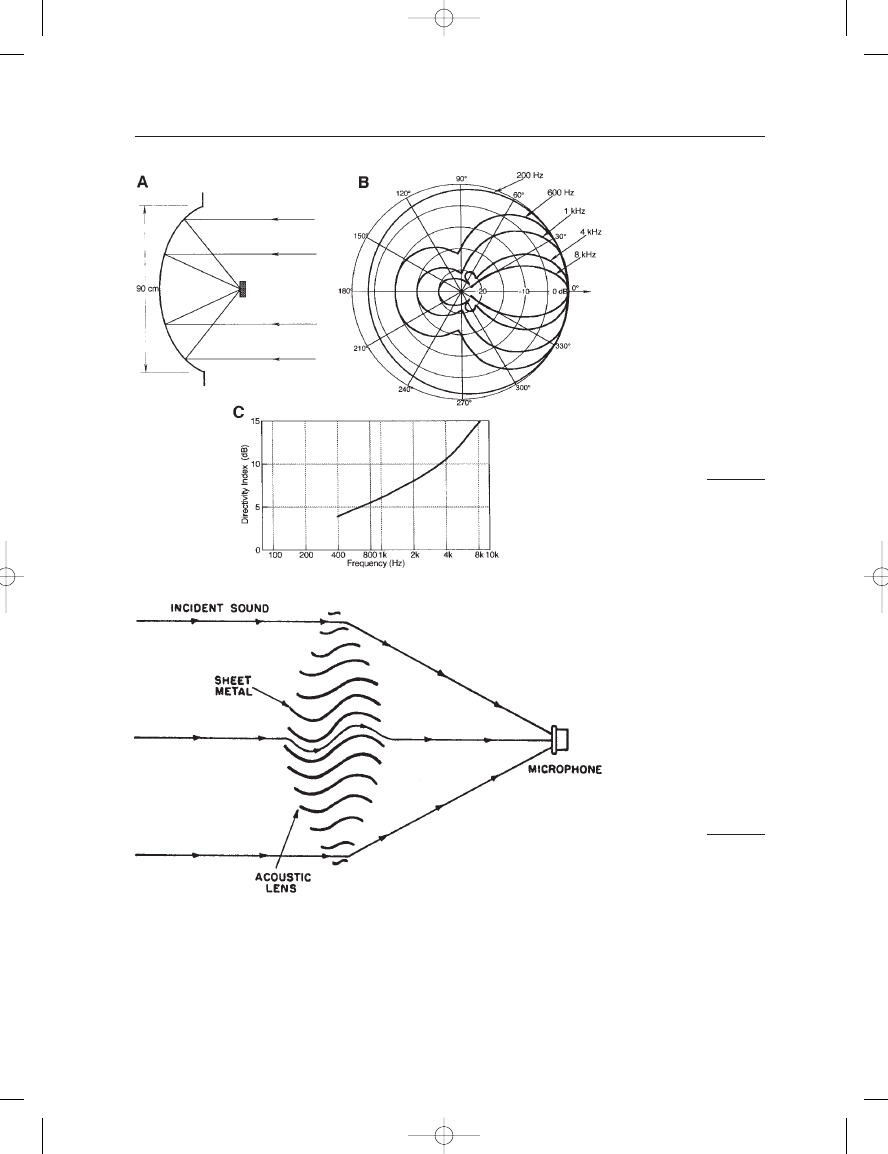
The design shown in Figure 6–9 resembles a cardioid pattern with a
slightly narrowed contour; its response at
90 is 12 dB, as compared
to
6 dB for a first-order cardioid. The physical circuit is shown at A,
and the actual realization is shown at B. Polar plots, both linear and log,
are shown at C.
THE MICROPHONE BOOK
98
FIGURE 6–7
Section view of an
acoustic lens directional
microphone.
FIGURE 6–6
Details of a parabolic
microphone; section
view (A); polar response (B);
directivity versus
frequency (C).
Earg_06.qxd 14/9/04 2:42 PM Page 98
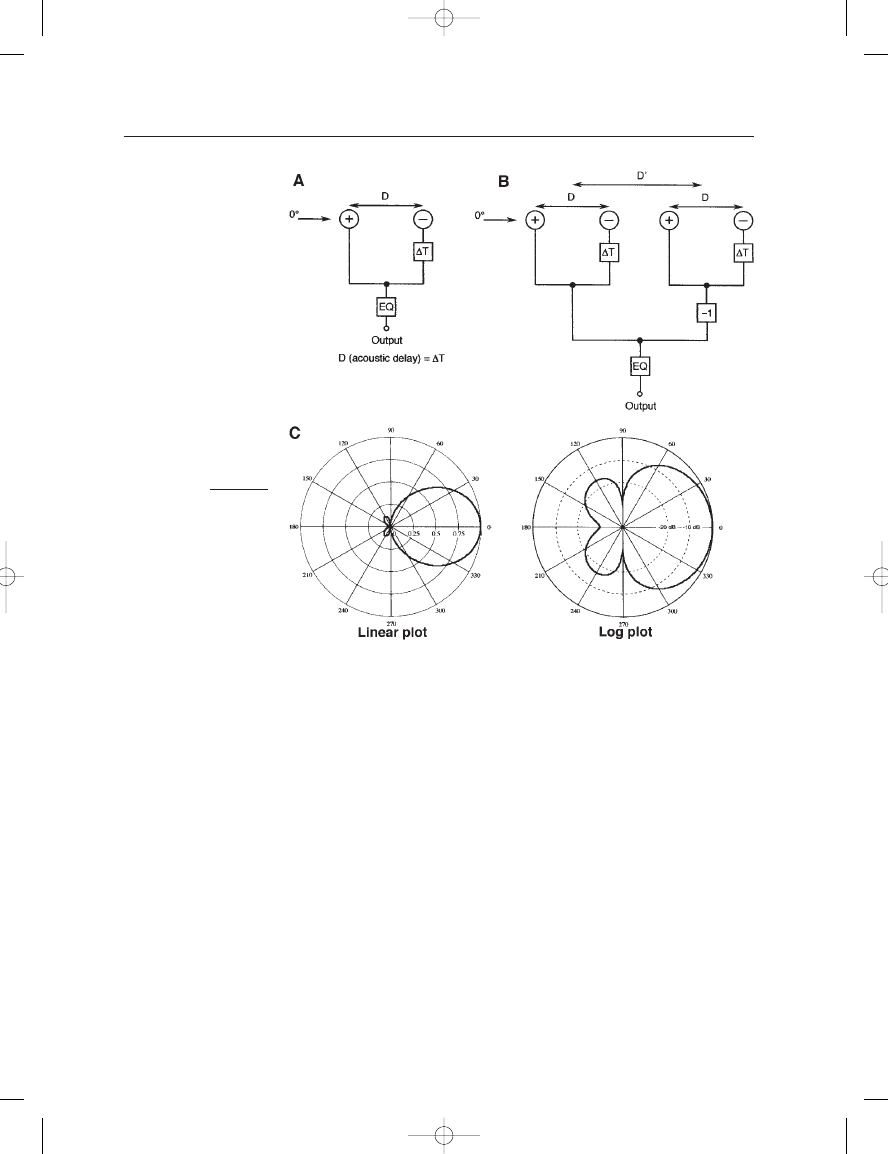
The design shown in Figure 6–10 resembles a figure-8 pattern with
a slightly narrowed contour, and its response at
45 is 6 dB, as com-
pared to
3 dB for the first-order figure-8 pattern. The physical circuit
is shown at A, and the actual realization is shown at B. Polar plots, both
linear and log, are shown at C.
VARIATIONS IN SECOND-ORDER DESIGN
The design of higher-order microphones can be simplified to some degree
by sharing of elements, as shown in Figure 6–11. Here, the two sections
making up the second-order design consist of elements one and two, and
elements two and three. Element two is shared between both sections. In
general, this approach provides a closer overall spacing between ele-
ments of the microphone. Here, note that distance D is the same for both
gradient values.
Another design option is to limit the HF range of second-order
action, and letting normal HF pattern narrowing to take over at higher
frequencies, as shown in Figure 6–12. Here, a pair of cardioid elements
are connected for second-order operation up to about 7 kHz. Above that
6: High Directionality Microphones
99
FIGURE 6–8
Principle of the
second-order microphone;
physical circuit of a
first-order cardioid
microphone (A); physical
circuit for a second-order
cardioid (B); polar patterns
for the microphone shown
in B (C).
Earg_06.qxd 14/9/04 2:42 PM Page 99
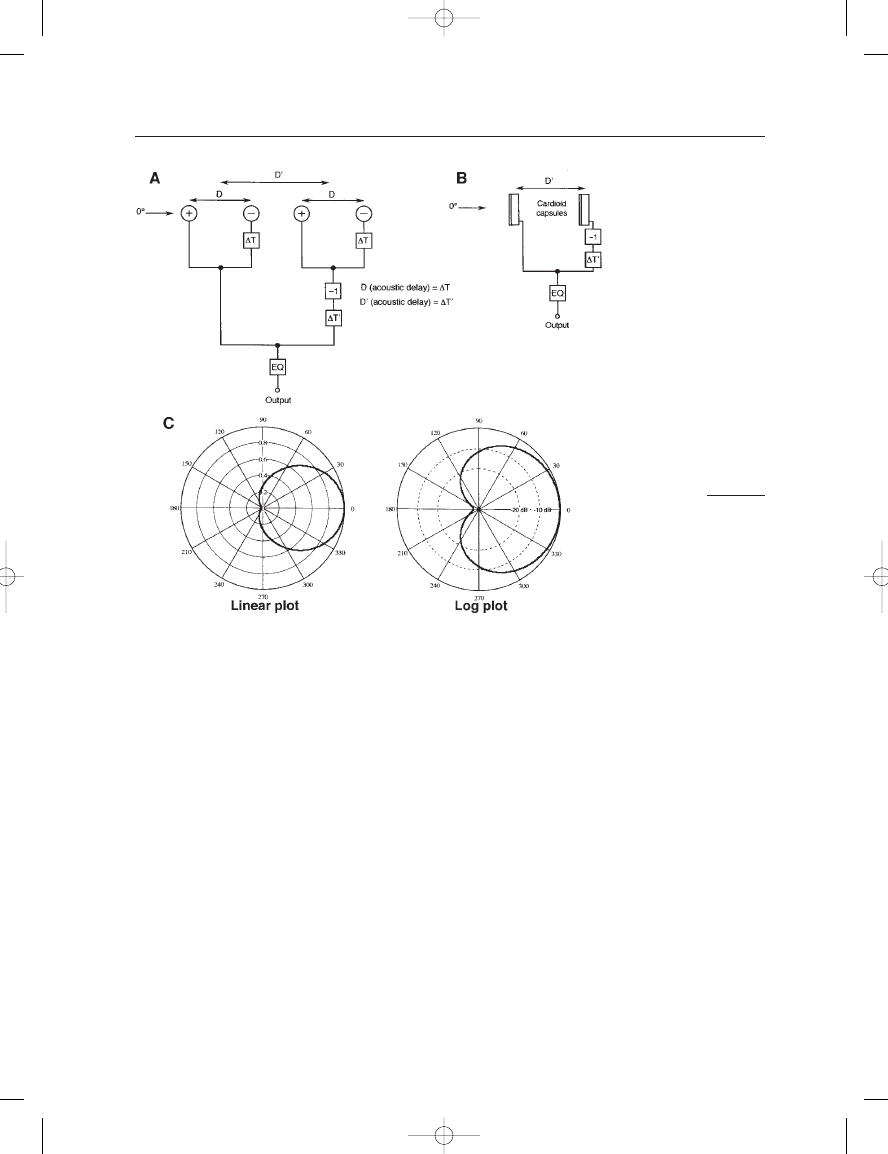
frequency the contribution of the rear element is limited, and the front
element’s increasing directivity is allowed to take over response in the
upper octave. The baffle surrounding the front element can be sized and
shaped to optimize the transition from second-order response to beam-
ing first-order response. Above about 12 kHz, the increased beaming of
the front element can be ignored.
THE ZOOM MICROPHONE
The microphone shown in Figure 6–13 is intended to be used with a
handheld video camera with a zoom lens. The microphone “zooms”
electronically in synchronism with the lens system. The microphone
array consists of three first-order cardioid elements whose outputs are
combined in several ways to produce three distinct patterns, including
the intervening patterns. The three primary patterns are:
1. Wide angle: omnidirectional pickup (sum of elements 2 and 3). It is
produced when potentiometers R
1
and R
2
are in position 1.
THE MICROPHONE BOOK
100
FIGURE 6–9
Design data for the
second-order microphone,
(0.5 0.5
cos
)(0.5 0.5cos ):
physical circuit (A);
mechanical circuit (B); polar
response (C).
Earg_06.qxd 14/9/04 2:42 PM Page 100
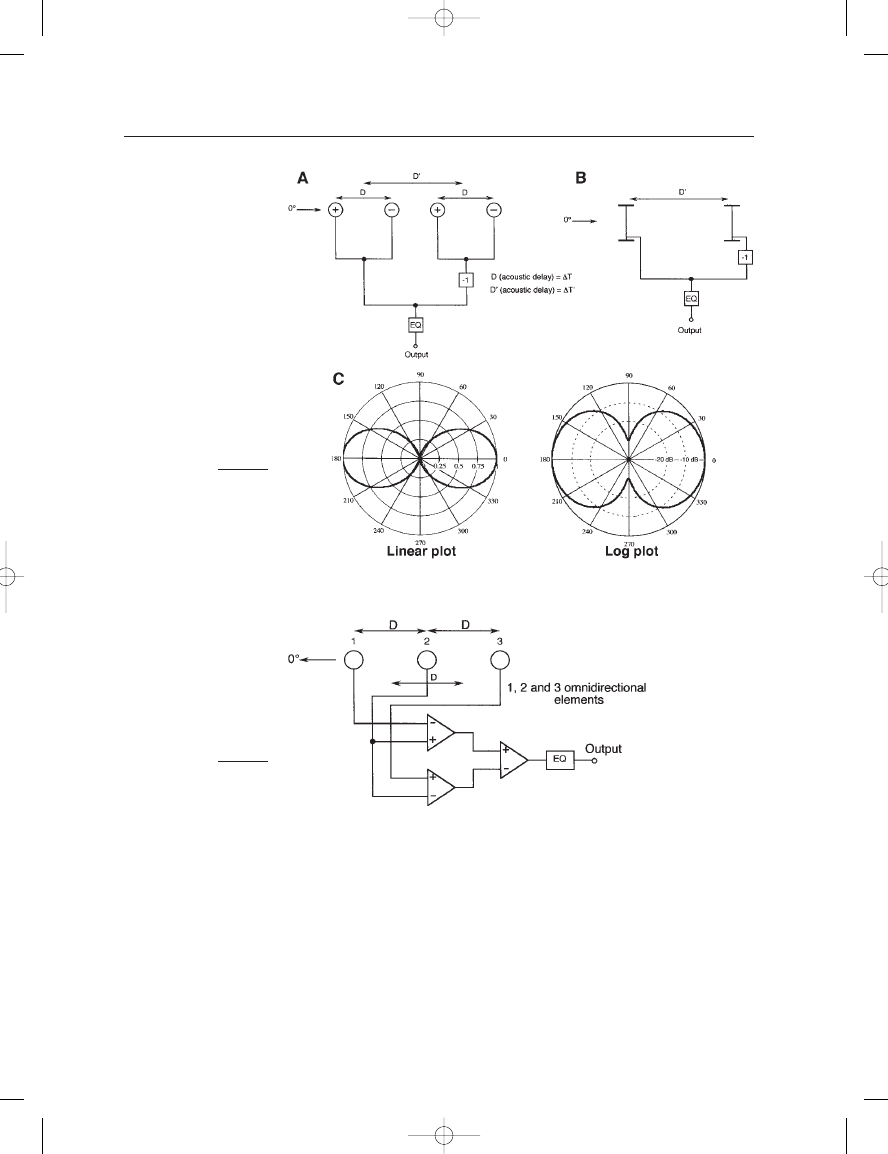
2. Medium angle: cardioid pickup (element 1 alone). It is produced
when potentiometers R
1
and R
2
are in position 2.
3. Narrow angle: second-order pickup (sum of elements 2 and 3 with
necessary equalization). It is produced when potentiometers R
1
and
R
2
are in position 3.
There is an overall gain shift of 12 dB throughout the microphone’s
operating range to compensate for distance effects.
6: High Directionality Microphones
101
FIGURE 6–10
Design data for the
second-order microphone,
cos
2
: physical circuit
(A); mechanical circuit
(B); polar response (C).
FIGURE 6–11
Second-order microphone
with shared elements.
Earg_06.qxd 14/9/04 2:42 PM Page 101
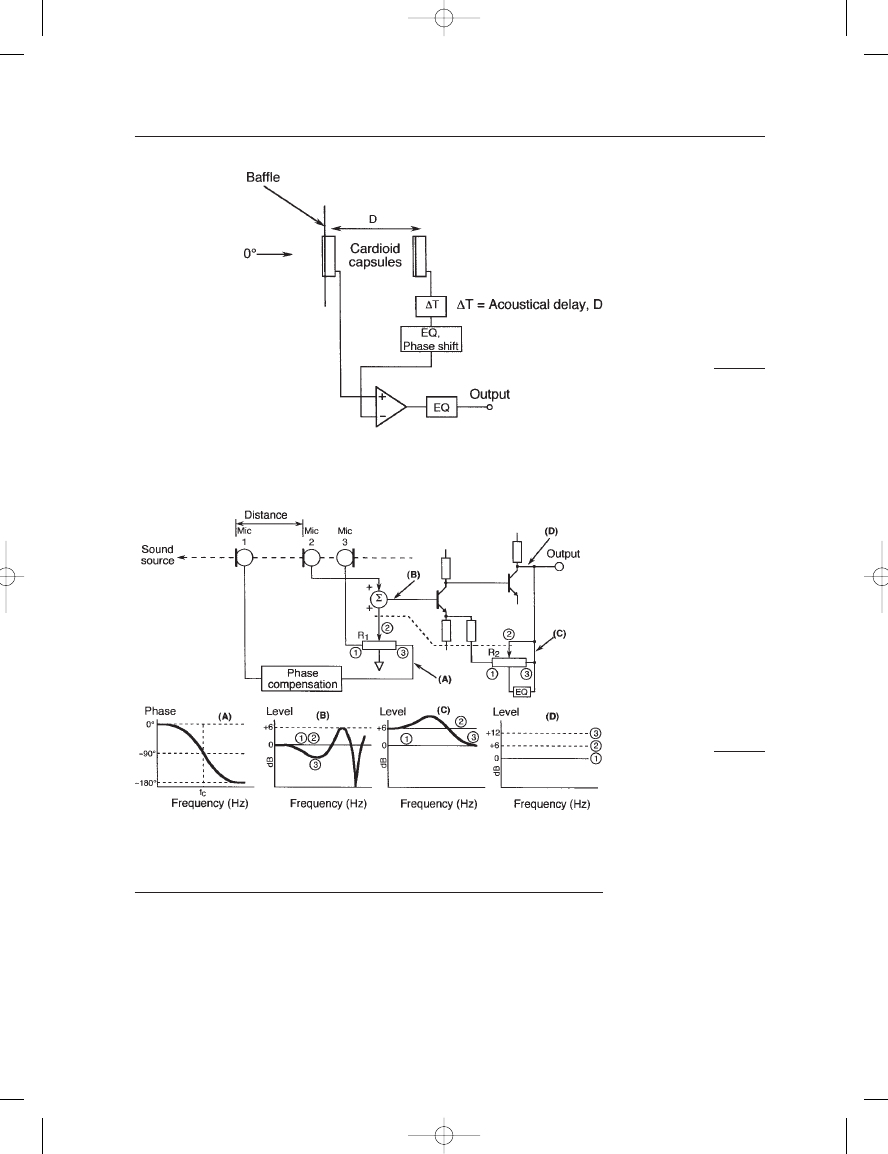
A THIRD-ORDER MICROPHONE
The microphone shown in Figure 6–14A has the polar equation
cos
3
. The resulting directional response is shown at B. Third-order
microphones have been used primarily in noise canceling applications,
where their immunity to distant sound sources is considerable (Beavers
and Brown, 1970).
THE MICROPHONE BOOK
102
FIGURE 6–12
A combination of first- and
second-order microphone
performance.
FIGURE 6–13
Details of a “zoom”
microphone. (Data after
Ishigaki et al., 1980.)
Earg_06.qxd 14/9/04 2:42 PM Page 102